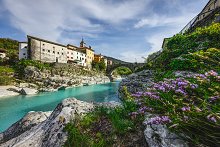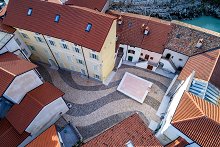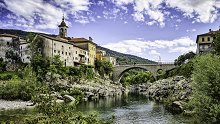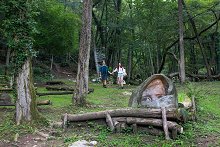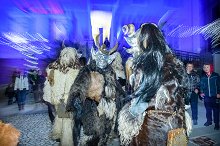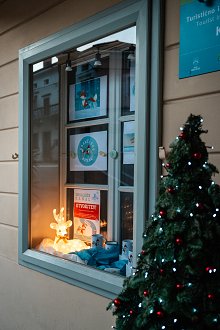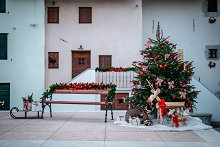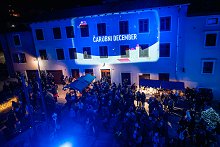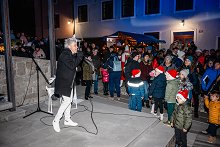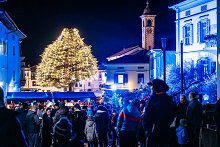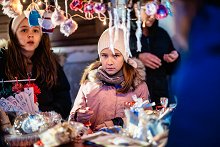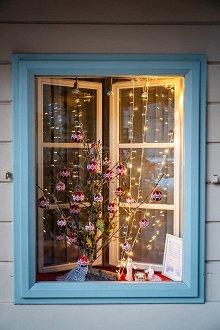The masks of Lig
The Masquerade Masks and costumes from Lig in the area of Kanalski Kolovrat have a real ethnological and cultural meaning.
The Liški pustje Ethnological Association originated from the love of this tradition. The group works especially during the period when the masquerade tradition of dressing up is celebrated.
It was Branko Žnidarčič who also helped to revive the carnival tradition of dressing up again. They are also entered in the Register of Intangible Cultural Heritage.
The masks of Lig are among the traditional Shrovetide mask of Slovenia. They originate from the settlement of Lig and the surrounding villages situated under the Kanalski Kolovrat area. The distinctive feature separating them from other Slovenian mask is that they are made of sheet metal. They were first made from copper sheet metal, but are nowadays made of aluminium.
The tradition of making the Lig masks is being continued by Branko Žnidarčič. He has reconstructed the masks of the 19th century using the notes and paintings from the 1950s made by the painter and ethnologist Pavel Medvešček. These masks are made of copper sheet metal.
Masks manufactured after the World War Two are made of aluminium sheet, divided into beautiful and ugly:
"Beautiful masks" enter a house, greet the family members and perform a dance for them.
Doctor: takes care of health
Gendarme: takes care of order
Special kurents called "pustje": they wear a garment made of sewn ribbons (rags), they have pliers in their hands, they chase away the winter, they jump, they run after the youth and fool around.
Girls are called "pustice": they represent the characters of old wives:
the first has a sack and is begging for nuts,
the second has a birch broom for sweeping,
the third has a baby.
Resian (Resia local inhabitant): wears a canopy lined with old utensils and tools. With it he repairs kitchen utensils and umbrellas, he uses a grinder to sharpen knifes, axes and other tools.
"daj-dam": a village outsider, for whom the only enjoyable time of year is the carnival, so his ears and nose grew longer.
A woman who carries her husband in a basket
Monkey: in a group it represents a naughty animal
Devil: he searches for prey with his pitchfork
The carnival masks from the 19th century are made of copper sheet:
"Ramašton": is the main member of the group, he is characterized by cupules and gnarls around his hat, he has a long whip in his hands, filling the youth with fear and trembling.
"Ramauši": there are several of them in the group, they differ from each other by various animal furs, which covers the back of their head, they carry a "toukin", a sack of ashes, stinking ribbons, chestnuts on a string, etc. If any girl managed to take at least one chestnut from a "ramauš" boy, it was believed, that she would get married that year.
"Bajarji": in the carnival group there are three of them: "petelinji", "šunični" and "pušpanov". Their clothing is covered with linden husk, they wear copper masks with wooden horns on their heads, called "škopnje", they carry pitchforks in their hands.
"Braja" has the face of a bird, and a basket on his back to collect gifts, on the basket, there is a scarecrow to protect it from robbers.
Foto: Primož Kožuh, Nika Šimac, Rajko Žbogar
